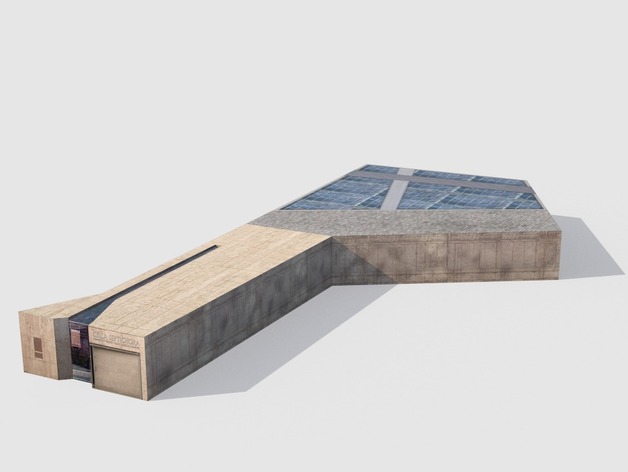
Cella Septichora - Pecs, Hungary
thingiverse
The early Christian cemetery of Pécs (Sophiane) from the late Roman times, the 4th-6th centuries is the most essential monument ensemble. The cemetery was located north of the city of the Roman times; the archaeological exploration was concentrated on the Cella Septichora and its neighbourhood: the eastern part of the Dóm Square, the part underneath the Parish–Chapter’s Archives, and the area of the Szent István Square. According to the researches, the Cella Septichora may have been built in the late 4th and early 5th century. The septifoil (seven-apse) chapel was found in 1927 by the archaeologists, but the excavation only started in 1940, led by the archaeologist Gyula Gosztonyi. The entrance of the one-level building without a burial chamber looked west. Opposite to the entrance, the building was closed by a semi-circular niche, an apse, equipped with an altar. The base area of the inner place of the Cella Septichora, a burial ground of well-off people is 20x15 metres, the ruins of its 1.25 metre thick walls are still 2 metres high in some places. The burial chambers explored in the vicinity of the chapel can be approached through a labyrinth of underground corridors. Of the burial chambers, the most important is the Peter and Paul Burial Chamber and the Wine Pitcher Burial Chamber. The Peter and Paul Burial Chamber was discovered in 1782. Its curiosity is the wall paintings depicting Bible scenes, made on dry plaster, from the 4th century. An exceptional archaeological artefact is the Christ monogram in the wreath found in the chamber, featuring apostles Peter and Paul on its two sides. The Christogram became the symbol of the world heritage of Pécs. Te existence of the Wine Pitcher Burial Chamber had been known since the 18th century, but its exploration took place in the 20th century, only. The building consists of a burial chamber with painted wall, and a chapel. The burial chamber was named after the wine pitch and the glass painted on the wall, referring to burial feasts. The chapel was the place of ceremonies, whereas the burial chamber served as a sepulture. The side walls of the burial chamber are decorated with geometric and plant motifs (vine tendril and vine leaf), the grid motif is a symbol of Paradise. The unmatched artistic and architectural creations have been on the UNESCO world heritage list since 2000. Tickets for visiting the unique ensemble can be bought in the Cella Septichora Visitor Centre on each day of the week, except for Mondays.
With this file you will be able to print Cella Septichora - Pecs, Hungary with your 3D printer. Click on the button and save the file on your computer to work, edit or customize your design. You can also find more 3D designs for printers on Cella Septichora - Pecs, Hungary.
